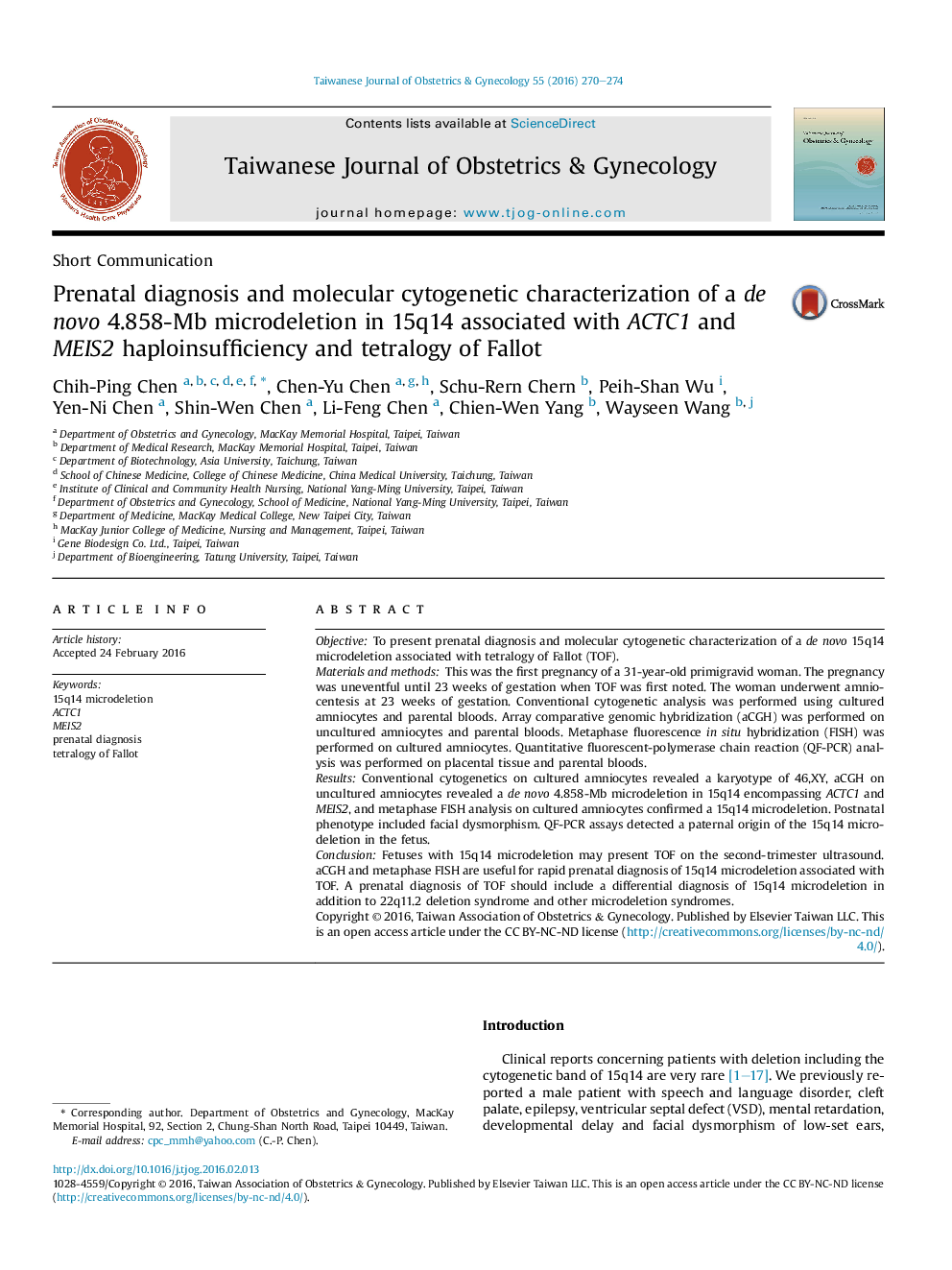| Article ID | Journal | Published Year | Pages | File Type |
|---|---|---|---|---|
| 3974987 | Taiwanese Journal of Obstetrics and Gynecology | 2016 | 5 Pages |
ObjectiveTo present prenatal diagnosis and molecular cytogenetic characterization of a de novo 15q14 microdeletion associated with tetralogy of Fallot (TOF).Materials and methodsThis was the first pregnancy of a 31-year-old primigravid woman. The pregnancy was uneventful until 23 weeks of gestation when TOF was first noted. The woman underwent amniocentesis at 23 weeks of gestation. Conventional cytogenetic analysis was performed using cultured amniocytes and parental bloods. Array comparative genomic hybridization (aCGH) was performed on uncultured amniocytes and parental bloods. Metaphase fluorescence in situ hybridization (FISH) was performed on cultured amniocytes. Quantitative fluorescent-polymerase chain reaction (QF-PCR) analysis was performed on placental tissue and parental bloods.ResultsConventional cytogenetics on cultured amniocytes revealed a karyotype of 46,XY, aCGH on uncultured amniocytes revealed a de novo 4.858-Mb microdeletion in 15q14 encompassing ACTC1 and MEIS2, and metaphase FISH analysis on cultured amniocytes confirmed a 15q14 microdeletion. Postnatal phenotype included facial dysmorphism. QF-PCR assays detected a paternal origin of the 15q14 microdeletion in the fetus.ConclusionFetuses with 15q14 microdeletion may present TOF on the second-trimester ultrasound. aCGH and metaphase FISH are useful for rapid prenatal diagnosis of 15q14 microdeletion associated with TOF. A prenatal diagnosis of TOF should include a differential diagnosis of 15q14 microdeletion in addition to 22q11.2 deletion syndrome and other microdeletion syndromes.
